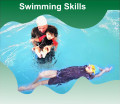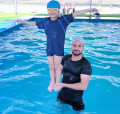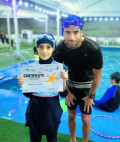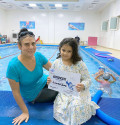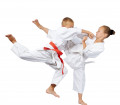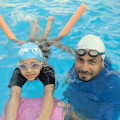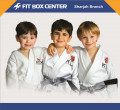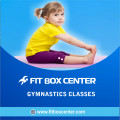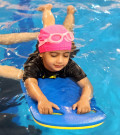
Gymnastic Drills for Beginners Foundations of Athletic Excellence
2023-12-30 - gymnasticGymnastics, with its blend of strength, flexibility, and
artistry, is an enchanting sport that captivates beginners worldwide.
1. Introduction. In this guide, we'll explore the
essential gymnastic drills for beginners, unraveling the secrets to mastering
this dynamic discipline
1.1 The Allure of Gymnastics
Gymnastics has a unique appeal, combining athleticism with
artistic expression. The allure lies in the graceful movements and the
awe-inspiring feats performed by gymnasts.
1.2 Importance of Beginner Drills
Before diving into advanced routines, beginners must grasp
fundamental drills. These lay the groundwork, ensuring a solid foundation for
future gymnastic endeavors.
2. Setting the Stage: Preparing Your Body
2.1 Warm-up Rituals
Proper warm-up routines are vital for preventing injuries
and optimizing performance. Simple stretches and light cardio prepare the body
for the demands ahead.
2.2 Flexibility Training
Flexibility is a cornerstone of gymnastics. Beginner drills
should include stretching exercises that enhance suppleness, promoting a wider
range of motion.
2.3 Strength Building for Beginners
Building strength gradually is key. Basic strength exercises
for the core, arms, and legs provide the necessary muscular foundation.
3. Mastering the Basics: Fundamental Gymnastic Moves
3.1 Body Positions and Posture
Achieving and maintaining proper body positions is
fundamental. Beginners learn the basics of body alignment, a crucial element in
all gymnastic disciplines.
3.2 Tumbling Techniques
Tumbling is the heart of gymnastics. Beginners start with
forward rolls and progress to more complex maneuvers, mastering the art of
controlled flips.
3.3 Introduction to Balancing Acts
Balancing on beams and other apparatus requires focus and
coordination. Initial drills focus on building stability and confidence in
these precarious positions.
4. Building Confidence: Progressing Step by Step
4.1 Gradual Increase in Difficulty
As beginners gain proficiency, the complexity of drills should
incrementally increase. This approach fosters confidence and prevents
overwhelming challenges.
4.2 Overcoming Fear and Anxiety
Fear is a common hurdle for beginners. Drills should address
this by introducing controlled exposure to challenging movements, gradually
diminishing anxiety.
4.3 Importance of Consistency
Consistent practice is the key to improvement. Establishing
a regular training schedule ensures steady progress in gymnastic skills.
5. Equipment Essentials: Navigating Gymnastic Apparatus
5.1 The Vault: Taking the Leap
Vaulting requires explosive power and precision. Beginners
learn the basics of the run-up, springboard contact, and executing aerial
maneuvers.
5.2 Bars and Rings: Aerial Challenges
Navigating bars and rings demands upper body strength.
Progressive drills help beginners build the required muscle and coordination.
5.3 Beam Basics: Finding Stability
Balancing on a narrow beam is both challenging and
exhilarating. Beginners start with simple exercises, gradually advancing to
more intricate routines.
5.4 Floor Exercises: Showcasing Artistry
Floor exercises combine athleticism with artistic
expression. Beginners learn choreographed routines that showcase their
developing skills.
6. Safety First: Avoiding Common Mistakes
6.1 Correcting Improper Form
Maintaining proper form is crucial for injury prevention.
Drills should include corrections for common mistakes to ensure safe and
effective training.
6.2 Understanding Personal Limits
Beginners must recognize their limits and avoid pushing
beyond them too quickly. Gradual progress is more sustainable and reduces the
risk of injuries.







.jpg)




































































